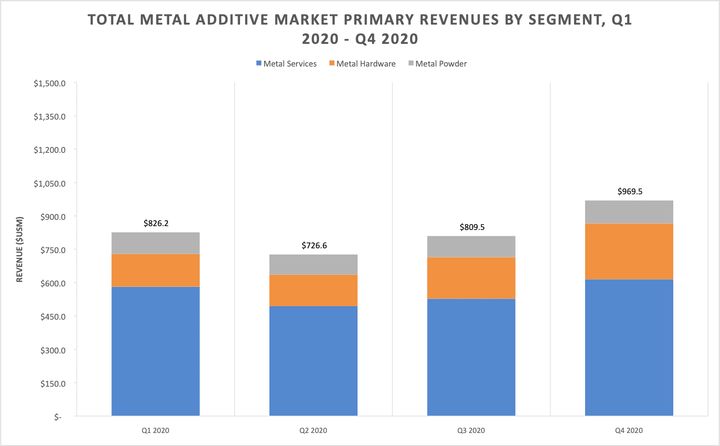
A report from SmarTech Analysis suggests additive manufacturing revenue was down in 2020.
The market data firm publishes a variety of data reports that are used by many in the industry. One of the factors they follow is the total market revenue.
This number represents the total amount of money spent by clients on AM-related projects, and includes totals of equipment sales, materials and services. The number can be reasonably used to judge the “size of the AM market”.
What happened in 2020? I have been quite curious about how the pandemic has affected AM. On one hand, use of AM has been growing dramatically. On another hand, general business activity has taken a dent, and a huge one in some verticals. On yet another hand, if I had one, supply chain breakdown forced many business into use of 3D printing technologies they hadn’t previously used. Some of these parties intend on continuing and expanding their use of the technology as it is far more flexible than previous approaches.
As you can see, the natural growth of AM business in 2020 was certainly not intuitively obvious as it has been in prior years.
SmarTech reports that worldwide AM industry reached US$2.4B in Q4, and a total of US$8.629B for the entire year 2020.
While that sounds like a lot (and it is), it is actually slightly smaller than the corresponding figure for 2019, which, according to SmarTech, was US$9.27B. The 2020 figure represents a drop of about seven percent.
The number could have been lower, it could have been higher or it could have been the same. It turns out the number was in fact slightly smaller.
Were it not for a migration towards 3D printing by broken supply chain victims, the figure for 2020 might have been a lot lower.
This is certainly a bump on the road to AM nirvana, but I believe in the long run we will find the growth rate of AM to exceed that of past years. 2020 was the year many manufacturers discovered 3D printing, and they’ll continue to use it going forward.
Once their competitors notice them, they’ll be using it too.
2020 may have been a bad year, but things are looking up for the future.
Via SmarTech
